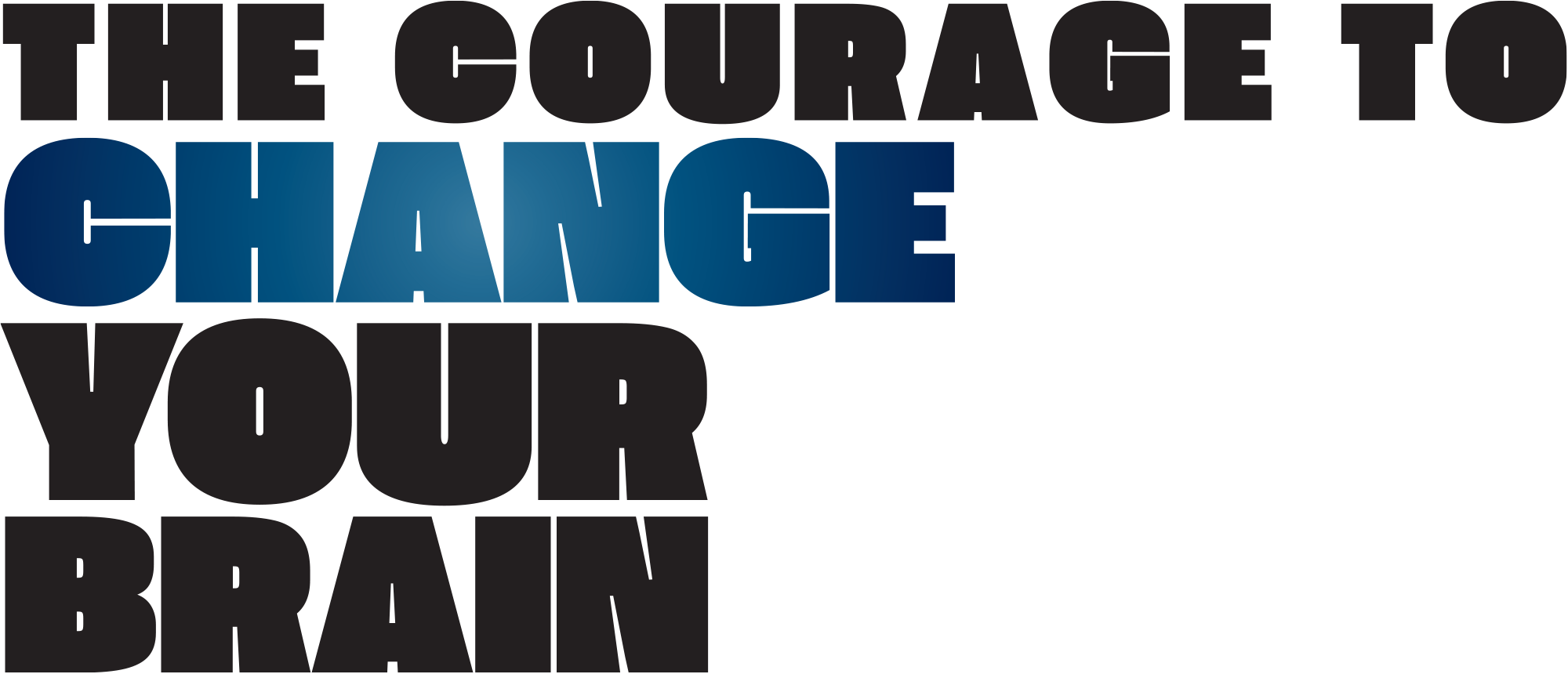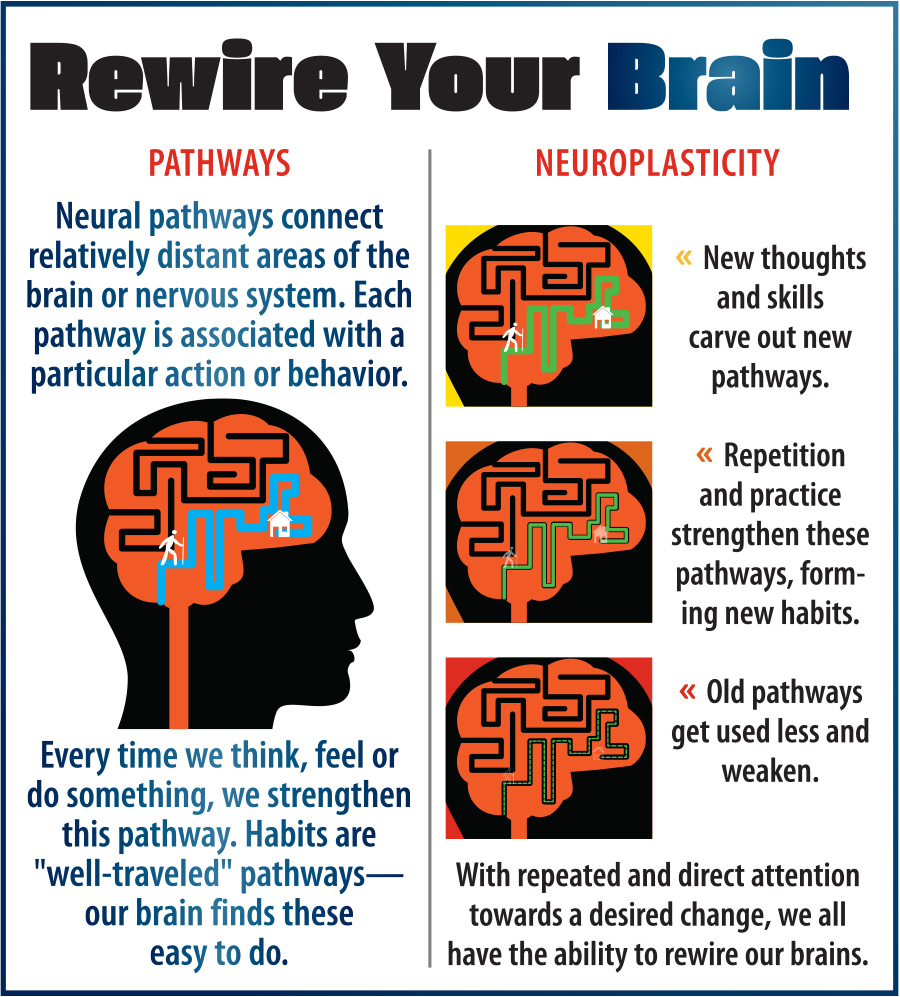

will praise You, for I am fearfully and wonderfully made; marvelous are Your works, and that my soul knows very well” Psalm 139:14.
David’s praise of God’s creative work with human beings is applicable in numerous ways. But we don’t celebrate how He created our brains enough. Rather than mere outcomes of evolutionary processes, coming together by chance, we were lovingly and intricately created as whole beings with a body that functions interdependently. The crowning aspect of our created selves, is our brains.
The above quote from Lao Tzu has circulated the earth for centuries. The question becomes how can my habits become my character? Well the answer lies in the Bible, that has existed centuries before Lao Tzu. Proverbs 23:7 says, “As a man thinketh…so is he.” This text seems to be saying what today’s research is bringing to light: our thoughts, emotions, behaviors, and experiences, change our brain chemistry, and eventually our brain structure; ultimately determining who we become.


“Your life literally shapes your brain” writes Hampton in a 2017 work The Neuroscience of Changing Your Behavior. “The more often you perform an action or behave a certain way, the more it gets physically wired into your brain. This amazing adaptive quality of your brain is known as neuroplasticity. It can work both for and against you. Neuroplasticity is the ability of the brain to change its physical structure and function based on input from your experiences, behaviors, emotions, and even thoughts. Your brain is capable of change until the day you die.
The following graphic (Monet, 2019) displays how thoughts, experiences, and behavior changes the chemistry and structure of our brains:
- Connections— “Your brain forms neuronal connections based on what you do repeatedly in your life—both good and bad.
- Traits— Your repeated mental states, responses, and behaviors become neural traits.
- Patterns— Making or breaking a habit involves neuroplastic change in your brain. And every time you act in the same way, a specific neuronal pattern is stimulated and becomes strengthened in your brain.
- Addiction— Your brain, being the efficient entity that it is, takes the path of least resistance each time, and a habit or full-blown addiction is born (Hampton, 2017).”
This is especially powerful and encouraging news for those struggling with addictions. Whether it is an addiction to alcohol, tobacco, drugs (prescription and nonprescription, legal and illegal), food, and, or processes such as gambling, shopping, sex, pornography, video gaming, work, and exercise. Given time and positive, healthy, behaviors, thoughts, and experiences, you can implement willed changes in the structure of your brain. Changes that would result in a healthier and higher quality of life.
The prefrontal cortex (in the frontal lobe) is the part of our brain that makes executive functions like exerting willpower, making rational choices and controlling impulses. Unfortunately, this is also the part of the brain that experiences the most damage from addiction. (Reader, 2019). When a person’s frontal lobe has been compromised, some things the person will exhibit are: an inability to suppress speech or actions that would be considered immoral or inappropriate; a lack of empathy for other people; dishonesty; no sense of guilt or remorse; and more (Kayo, 2020).
While this might not be concerning for everyone, it is for those seeking to live a life in accordance with the will and word of God. Philippians 2:5 says, “Let this mind be in you which is also in Christ Jesus.” And Romans 12:2 says, “Be not conformed to this world; but be ye transformed by the renewing of your mind. That you may prove what is that good and acceptable, and perfect Will of God.” Even if one has experienced a compromised frontal lobe, and changed brain chemistry, neuroplasticity confirms that it can be changed back.
I have been an addictions specialist for over 40 years, and have not only seen this effective in others, but in my life as well. When diagnosed with hypertension, my physician prescribed a benzodiazepine for me to take. After two months of taking the medication, being an addictions specialist, I noticed signs of dependency occurring. I shared this concern with the physician, but he refused to believe me, and insisted that I stay on the drug.

Much research exists regarding the impact each of the eight natural laws of health have on brain chemistry and structure. The one I want to highlight below is Trust in Divine Power. Specifically, spirituality on brain chemistry and structure.
The Frontal Lobe – is activated by prayer and focused attention. Activities that engage this area protect it against age-related deterioration that is associated with dementia. Prayer, if done for at least 12 minutes daily on a regular basis, may slow the age-related decline of the frontal lobe.
The Anterior Cingulate – is activated when we feel compassion, have an awareness of other people’s feelings, and empathize with them. Prayer increases activity in this area, which is considered to be the part of the brain that most clearly distinguishes human beings from animals. Newberg calls it the ‘neurological heart’.
The Parietal Lobes – are activated when we feel a sense of ourselves as separate from other things in the world. Activity in this area drops during religious experiences (singing, praying, reading scripture); our sense of self actually diminishes, enabling a feeling of being more ‘at one’ with God, other members of a congregation, or the universe at large.
Newberg further observed that when prayers are spoken, either silently or out loud; or sung, whether from memory or by reading a prayer book, the brain becomes highly engaged. Such prayers can focus on getting closer to God, showing gratitude, seeking strength, or making a petition on behalf of oneself or another person.
In addition to prayer, Newberg’s research has examined the effects of meditation. To put this research in context, meditation simply means to think about or contemplate issues related to spirituality. The brain activity associated with various types of meditation is much like that of contemplative or meditative prayers, which may include repeating prayers (chanting) or reflecting on the meaning of Biblical passages.
The Serenity Prayer is used in almost all addictions recovery centers and says,
As we seek to make Heaven our destiny, let us watch our thoughts, words, actions, character, emotions, and behaviors; and do as recommended in Colossians 3:2, “Set your minds on things above, not on earthly things.”